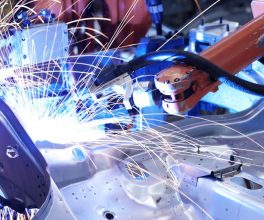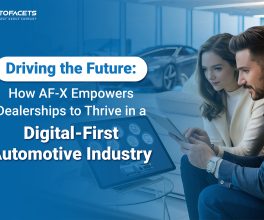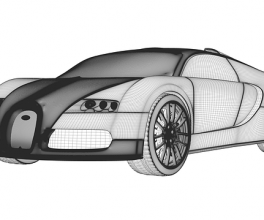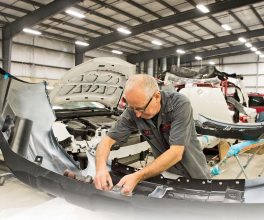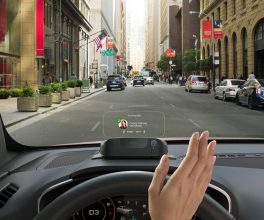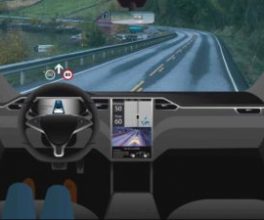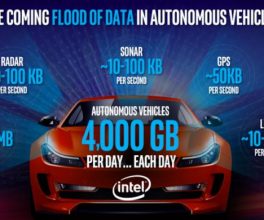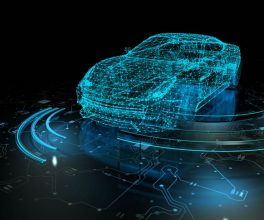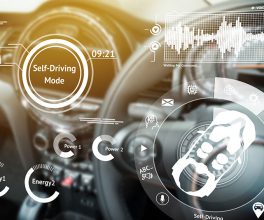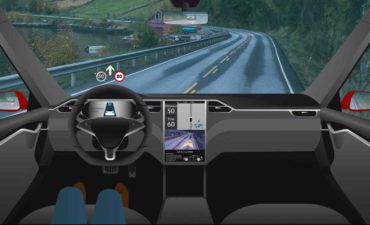In part one of my interview with Evangelos Simoudis on his new book, The Big Data Opportunity in Our Driverless Future. we left some sticky questions on the table. In this concluding installment of our back and forth, I ask Simoudis to parse the big data hype – and explain why it actually matters to autonomous vehicles.
We also get into infrastructure limitations, the problem of industry-wide standards, and whether the incumbents are doing enough to avoid their own disruption. Data is the real asset here, not vehicles – and that data will separate winners and losers based on the so-called “experiences” they can deliver.
Why big data actually matters to our automotive future
Jon Reed: We all understand that AI/machine learning will play a central role in autonomous vehicles, or as you put it, ACE (Autonomous Connected and Electrified vehicles). But you also bring in that trough-of-disillusionment buzzword, “big data.” In the book, you warn that even 5G broadband won’t be enough to support the data needs of advanced ACEs. Why is big data so important here, and what will need to happen to resolve the broadband/data volume issues?
Evangelos Simoudis: In autonomous vehicles and next-generation mobility, big data and AI go hand-in-hand. The vehicle with level five driving automation generates one GB per second of operation (Editor’s note: Wow!). To that, you have to add every other data that can be used for the improvement of the entire transportation experience, from traffic data to weather data to infotainment.
Some of this data has a short “half life.” Other data needs to be saved for longer time. Some data needs to be communicated in and out of the vehicle immediately and other can be stored on board and communicated occasionally, e.g., when the vehicle is charging. To deal with these issues I present a framework for organizing and reasoning about the various types of mobility-related data.
Reed: One data obstacle you mention is the need to establish industry-wide data protocols for the data layer these vehicles will require. I find myself skeptical that industry-wide data standards will be adopted. You?
Simoudis: Those involved in next-generation mobility have a very powerful example that should drive their thinking on this issue: the telco industry when smartphones started being introduced. At that time, telcos adopted a “walled garden” approach to data. The introduction of the iPhone and the services it enabled through a variety of applications, as well the expansion of the services offered by companies like Google, Facebook, Amazon and others took away the advantage telcos had through their subscriber data.
The automotive industry (OEMs, parts suppliers, etc.) are at a similar crossroads. If they choose to take a similar approach to that of telcos ten years ago, they run the risk of missing out on the opportunity provided to them by the big data generated in next-generation mobility. Just look at the partnerships that Uber is establishing and the types of data involved in such partnerships.
Disrupting the incumbents: the impediments of culture
Reed: In our 2015 chat, you said that the auto industry was genuinely concerned about Google, Tesla, Apple and Silicon Valley startups. For this reason, they have established innovation outposts in the Valley – and all of the major automakers are working on ACEs. How well are the incumbents doing with these Outposts since we last talked?
Simoudis: There is definitely a changing environment. More incumbents are establishing innovation outposts in Silicon Valley, Israel and a few other places – such as Berlin and Singapore – and they are increasing the size of these organizations and the variety of skillsets they include. They are also creating new companies to address next-generation mobility. My question remains whether even these improved efforts are adequate given what I feel will be the magnitude of the disruption.
Reed: You’ve said that “culture is a big impediment” for the incumbent players. What needs to change and how should they go about it?
Simoudis: I feel that most incumbents have not yet fully appreciated that next-generation mobility will rely less on car ownership and more on car access. As I indicate in the book, these companies will need to transition from being in the manufacturing business to being in the insights business, and through those insights provide superior transportation experiences.
Some incumbents such as Ford, BMW, Mercedes, GM and a few others have established new companies to address on-demand mobility. I’m assessing how these efforts are progressing, the level of support they will continue to get from the parent company and the level of influence they will have in the parent company. For me that will be the best indication that something is really changing.
Reed: Do you still believe that fleets of cars will be the first to push the ACE envelope? How will this work?
Simoudis: Indeed I think that fleets, whether of passenger cars or trucks, will be the first broader adopters of ACE vehicles. The reason is because the business model of ridesharing companies – and of long-haul logistics companies – can be dramatically impacted by the use of ACE vehicles. This is why startups like Peloton are attracting so much interest, and ride hailing companies like Uber and Grab have active ACE vehicle programs.
The best data and riding experience will win
Reed: One of your book readers commented that “ACE cars are sensing machines on wheels, generating massive amounts of data that the firms that run them can use to generate more value for their drivers and customers. The race to provide the best information layer is on, from maps to driver habits and beyond.” Are we going to see a point where the best data platform and UX is more valuable than the car itself?
Simoudis: As you move to shared mobility, the cabin becomes important – but the rest of the vehicle does not. The companies that are able to best personalize that cabin by trip purpose, passenger type, passenger mood, etc. will be preferred over those that offer a generic cabin environment. The rest of the vehicle will be important for economic reasons to the vehicle operator, very much like the airplane’s external characteristics and engine characteristics are important to the airline but not to the passenger.
The passenger cares about what is happening in the cabin: what are my entertainment options, how close are these options to my tastes, is my seating arrangement comfortable enough so that I can work during my trip, do I have internet access, etc.?
Reed: Won’t these changes eventually alter urban planning and how we conceive of cities themselves?
Simoudis: They absolutely will. Cities like Singapore and New York are already thinking about how autonomous vehicles and on-demand mobility will impact the planning of everything from new residential areas to transportation infrastructure.
Reed: How do you view the sensational security stories, such as hackers gaining access to car controls and navigation? How seriously should we take ACE security, and what are the best ways to address it?
Simoudis: This is a very big problem, and unfortunately we are just now starting to comprehend just how big of a problem exists. There is work that is being done to both determine how to retrofit existing vehicles and transportation infrastructure to make them more secure, but also how to safeguard the vehicles that will be introduced and the infrastructure that is being planned.
Reed: You’ve been heavily involved in evaluating startups in this space. Are there any ideas you are particularly excited about, or that surprised you?
Simoudis: I’m particularly excited about companies working on large-scale transportation data ingestion, cleaning, standardization and analysis/insight-geneation. For AI systems to work properly, the massive data sets we will start collecting and distributing among several clouds will need to be of specific quality. To this end, I’m particularly interested in the opportunities of next-generation mapping and navigation systems that will deal with real-time updates, and enable us to address the issues that will take us from the limited deployment of vehicles with level five driving automation, to their broad deployment and adoption.
End note: for those who are wondering about Simoudis’ views on alternative transportation beyond automotive, from bikes to trains to hyperloops, we covered that in our original piece two years ago.
Author – Jon Reed

